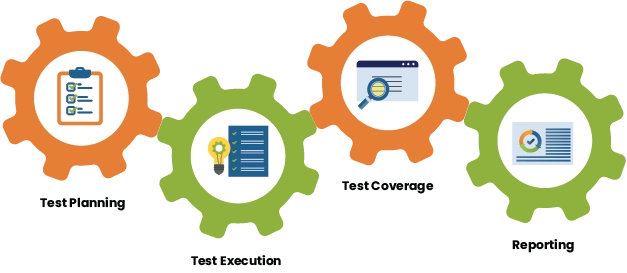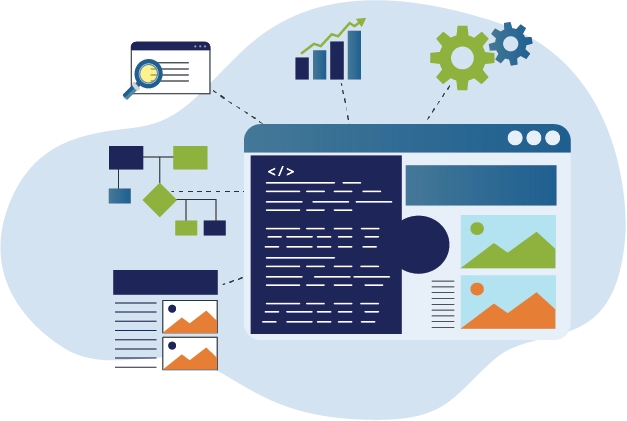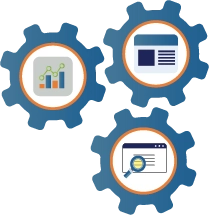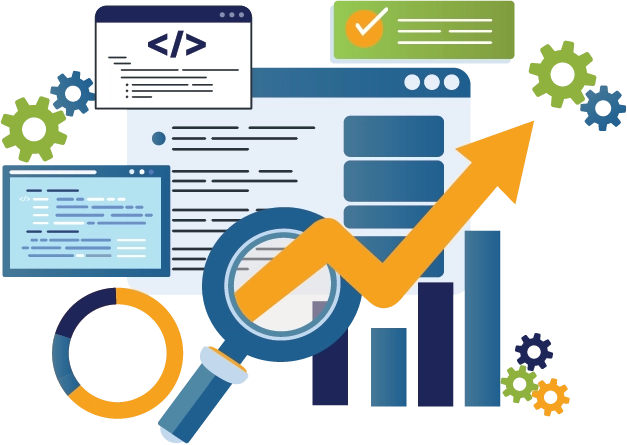Ensuring the software reliability and stability is important for developing the software. In the current era of digitalization, requirements are constantly evolving, leading to ongoing changes and improvements. In that instance software regression testing is required to safeguard your product and not face any failure. To deliver a high-quality product in this competitive environment regression testing needs effective strategies and practices.
“According to recent reports most of the enterprises are adopting software regression testing as part of their software development life cycle to ensure the product quality”
What is Software Regression Testing?
Regression testing or software regression testing is one of the testing methods that is conducted whenever it changes or introduces new features in the existing system. The primary goal of regression testing is to ensure that the existing feature or functionality is not impacted when changes are made to previously developed code. Changes may include software enhancements, patches, configuration changes, or even environmental changes. Testers perform regression testing each time a new build is released to validate that it has not brought any new bugs.
Since it is a crucial process, every organization must include the automated software regression testing process in their development cycle to deliver the quality assured product.

What is Automated Regression Testing?
Performing automated regression testing is the simplest process compared to manual regression testing. It requires an application or automated tools that effortlessly execute predefined test cases when there are changes or updates in the code. Manual testing is a complicated and time-consuming process which requires complete human intervention to execute the test cases. Organizations adopting automated testing can yield significant output and deliver the product on time.

Importance of Software Regression Testing
In the agile methodology’s iterative process, organizations often need to make changes to existing products. It is crucial that these changes by developers do not break the existing code. Regression testing ensures that there is no negative impact on the existing product. By performing quick software regression testing testers receive valuable, instant feedback that helps to make necessary modifications in the code.
Below are the key reasons why regression testing is important,
1. Maintains the product quality
2. Ensures there is no impact on the existing functionality
3. Early bug detection and preventing new bugs
4. No impact on the CI/CD pipeline
5. Saves time and cost
As per Gartner’s statistics, by 2027, 80% of enterprises will have integrated AI-augmented testing tools into their software engineering toolchain, which is a significant increase from approximately 15% in early 2023.
Implement thorough regression testing today and safeguard your product user experience!

Types of Regression testing?
Below are some common types of regression testing
-
Unit Regression Testing
Unit regression testing is a common type of testing executed when changes or modifications are made to an individual unit of source code or module. Testers perform this testing to ensure that the changes have not introduced any new bugs in that unit.
-
Partial Regression Testing
When new codes are added to the existing component or module, partial regression testing will be conducted after the impact analysis. If the module or component is integrated or connected with another module, partial regression testing should be performed to ensure the addition of new code does not affect any existing functionality.
-
Complete Regression Testing
When major changes are made to the product, complete regression testing will be conducted before release. It involves retesting the entire system code and its features to ensure everything functions as intended.
-
Corrective Regression Testing
Corrective regression testing is the process of rerunning the existing test cases to ensure that no defects are found in the source code. It is a validation process to confirm the quality of the existing system source code when no changes have been made. Testers perform this type of regression testing regularly.
-
Progressive Regression Testing
When new features are added to the existing product, new test cases must be created. The progressive regression testing process safeguards the existing functionality and allows testers to perform the testing process for the newly added feature alone.
-
Selective Regression Testing
If any modifications are made to the subset of test cases, testers perform selective regression testing to verify the changes don’t produce any negative impact. The benefits of selective regression testing are saving time and cost, increasing product efficiency, and comprehensive test coverage.
Challenges in Software Regression Testing
Regression testing is a crucial component in the SDLC, still, it has a few unspoken challenges for testers while executing it. Below we have listed those challenges.
-
Test Suite Growth
As user expectations continue to grow, product enhancement becomes mandatory. Adding new features and improving existing ones consistently expands the test suite, resulting in increased time and resource consumption for test execution.
-
Test Environment
Configuring a consistent test environment is crucial when executing regression testing. Inconsistencies in retrieving information from different databases can make it difficult for testers to identify the exact issue, whether it is due to a logic error or a defective test environment configuration.
-
Test Data Management
As the test suite is growing, managing and maintaining test data becomes complex, especially for large projects. Accuracy is important when performing the testing process, for larger projects contain many different modules and it is hard for testers to validate various data.
-
Prioritization of Test Cases
Not all organizations have enough skilled resources. Prioritization of test cases is crucial for testers unless they deeply understand the project requirement, risk factors involved, and nature of changes are made to it.
-
Improper Documentation
If the project requirement document doesn’t have sufficient information about the product features and functionalities that are required for test execution, then it will be difficult for testers to identify the potential areas of impact.

Prioritize, Automate, and Optimize your Testing Process with TestWheel
Strategies for Overcoming Challenges in Software Regression Testing
Even though software regression testing has many challenges it can be overcome by crafting effective strategies before approaching it.
-
Prioritization and Test Case Optimization
After modification, conduct the impact analysis before proceeding with test automation. It helps the testing team to prioritize the task based on the risk analysis of each module or component.
-
Automation and Tooling
Choosing the right automation testing tool assists in executing the repetitive test cases that minimize the time and resources effectively. Moreover, testers can create new test cases and maintain the existing test cases easily.
-
Implementing CI/CD
Implementing the continuous integration and continuous delivery pipeline with regression testing provides faster feedback, streamlines the complete test suite, identifies the bugs in earlier stages, and reduces the manual intervention.
-
Test Environment Management
Set up a consistent test environment and automate it to identify the bugs effectively. Going with the right platform helps to automate the test environment which can be from different teams and locations.
Conclusion
Nowadays, with artificial intelligence and machine learning integrated into nearly every application, software development organizations must be prepared to adapt to future transformations. Software regression testing is the inevitable process for delivering a quality-assured product. As users become increasingly adept at handling advanced technologies, their expectations are higher than ever. Performing regression testing ensures the product is bug-free and your organization stays ahead of the competition.
In addition, the implementation of automation testing streamlines the entire testing process providing advantages like time and resource constraints, maximizing the return on investment (ROI), faster feedback, and early bug detection, and ensuring the product delivery on time to the market.
Regardless of your business size small, medium, or large TestWheel is the ideal platform for enterprises, designed to support and streamline testing processes efficiently.


